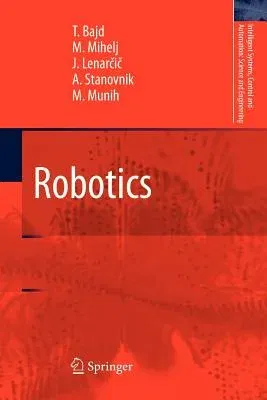1 Introduction; 1.1 Degree of freedom; 1.2 Robot manipulator; 1.3 Robot
arms; 1.4 Robot manipulators in industrial environment; 2 Homogenous
transformation matrices; 2.1 Translational transformation; 2.2
Rotational transformation; 2.3 Pose and displacement; 2.4 Geometrical
robot model; 3 Geometric description of the robot mechanism; 3.1 Vector
parameters of a kinematic pair; 3.2 Vector parameters of themechanism; 4
Two-segment robot manipulator; 4.1 Kinematics; 4.2 Workspace; 4.3
Dynamics; 5 Robot sensors; 5.1 Principles of sensing; 5.2 Sensors of
movement; 5.2.1 Placing of sensors; 5.2.2 Potentiometer; 5.2.3 Optical
encoder; 5.2.4 Tachometer; 5.3 Force sensors; 5.4 Robot vision; 6
Trajectory planning; 6.1 Interpolation of the trajectory between two
points; 6.2 Interpolation by use of via points; 7 Robot control; 7.1
Control of the robot in internal coordinates; 7.1.1 PD control of
position; 7.1.2 PD control of position with gravity compensation; 7.1.3
Control of the robot based on inverse dynamics; 7.2 Control of the robot
in external coordinates; 7.2.1 Control based on the transposed
Jacobianmatrix; 7.2.2 Control based on the inverse Jacobianmatrix; 7.2.3
PD control of position with gravity compensation; 7.2.4 Control of the
robot based on inverse dynamics; 7.3 Control of the contact force; 7.3.1
Linearization of a robot system through inverse dynamics; 7.3.2 Force
control; 8 Robot environment; 8.1 Robot grippers; 8.2 Feeding devices;
8.3 Robot assembly; 9 Standards and safety in robotics; Robot
vocabulary; Further reading; Index.


